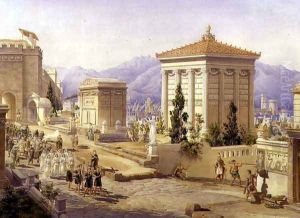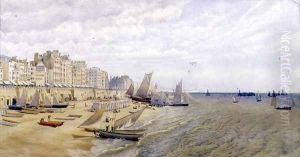Frederick Pepys Cockerell Paintings
Frederick Pepys Cockerell was a distinguished British architect and the son of the renowned architect Charles Robert Cockerell. Born on October 26, 1833, into a family with a rich architectural heritage, Frederick was exposed to the world of design and architecture from a young age. His father, Charles Robert Cockerell, was an eminent figure in the architectural field, known for his scholarly approach and contribution to the revival of classical architecture in the 19th century. This environment undoubtedly influenced Frederick's career choice and his approach to architectural design. Despite his relatively short life, Frederick Pepys Cockerell made significant contributions to British architecture during the Victorian era, showcasing a blend of classical and Gothic revival styles in his works.
Frederick's education and training in architecture were comprehensive, allowing him to develop a refined and versatile design approach. He worked closely with his father on several projects, gaining invaluable experience and insight into the architectural practices of the time. Throughout his career, Frederick was involved in various architectural projects, including the design and restoration of churches, public buildings, and private residences. His designs often reflected a keen attention to detail and a profound appreciation for historical architectural styles, which he skillfully adapted to meet the needs and tastes of his era.
One of Frederick Pepys Cockerell's notable projects was the restoration of the Church of St. John the Baptist in Cirencester, a project that showcased his skill in Gothic revival architecture and his ability to preserve the historical integrity of the building while incorporating contemporary elements. His work on private residences also received acclaim, with a focus on creating spaces that were both functional and aesthetically pleasing, often drawing inspiration from classical architecture.
Unfortunately, Frederick's career was cut short when he died on May 11, 1878, at the age of 44. Despite his premature death, Frederick Pepys Cockerell left behind a legacy of architectural work that continues to be studied and admired for its craftsmanship and historical significance. His contributions to British architecture during the Victorian era remain a testament to his talent and the architectural heritage of the Cockerell family.

